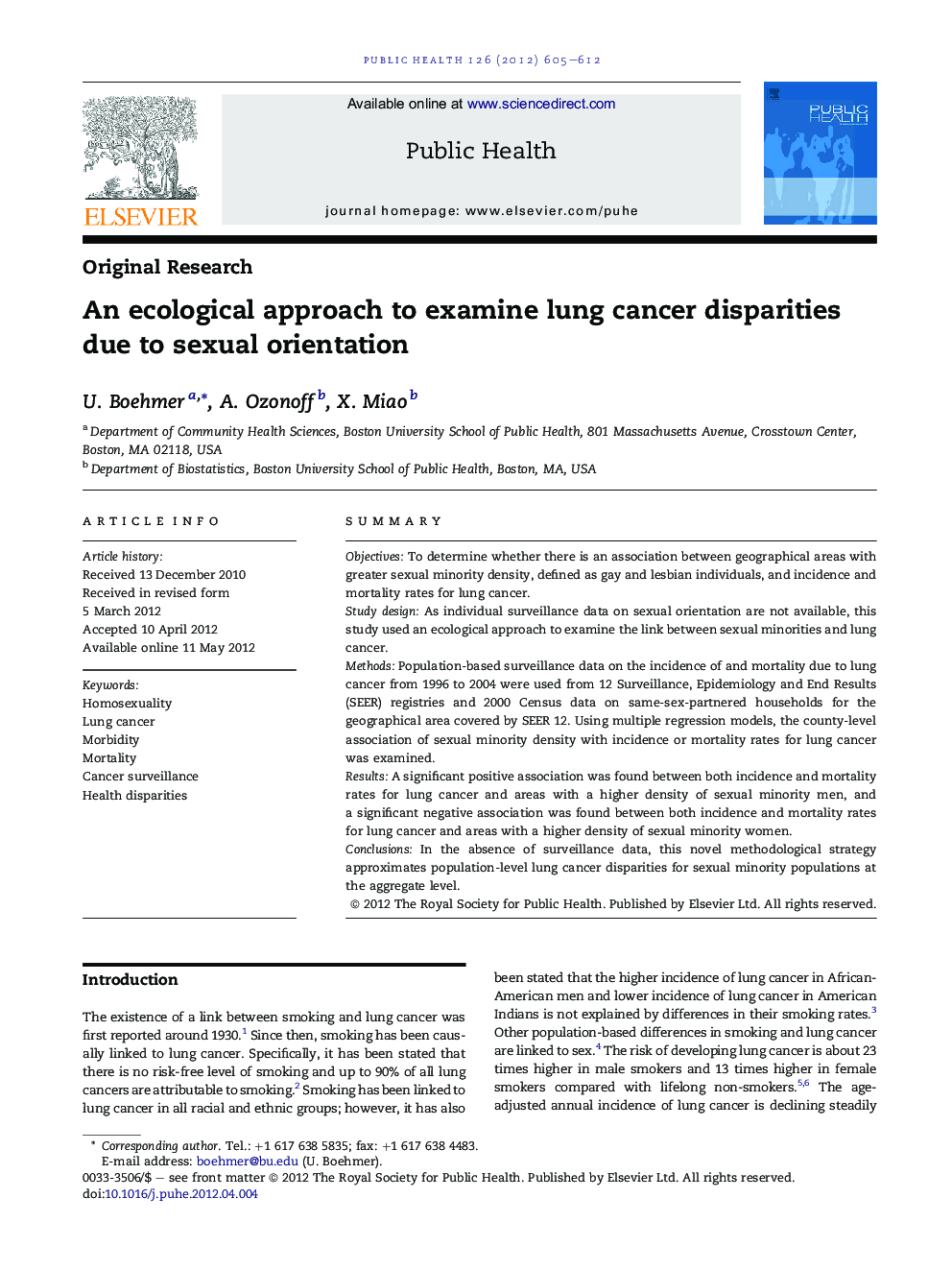| Article ID | Journal | Published Year | Pages | File Type |
|---|---|---|---|---|
| 1087825 | Public Health | 2012 | 8 Pages |
SummaryObjectivesTo determine whether there is an association between geographical areas with greater sexual minority density, defined as gay and lesbian individuals, and incidence and mortality rates for lung cancer.Study designAs individual surveillance data on sexual orientation are not available, this study used an ecological approach to examine the link between sexual minorities and lung cancer.MethodsPopulation-based surveillance data on the incidence of and mortality due to lung cancer from 1996 to 2004 were used from 12 Surveillance, Epidemiology and End Results (SEER) registries and 2000 Census data on same-sex-partnered households for the geographical area covered by SEER 12. Using multiple regression models, the county-level association of sexual minority density with incidence or mortality rates for lung cancer was examined.ResultsA significant positive association was found between both incidence and mortality rates for lung cancer and areas with a higher density of sexual minority men, and a significant negative association was found between both incidence and mortality rates for lung cancer and areas with a higher density of sexual minority women.ConclusionsIn the absence of surveillance data, this novel methodological strategy approximates population-level lung cancer disparities for sexual minority populations at the aggregate level.
